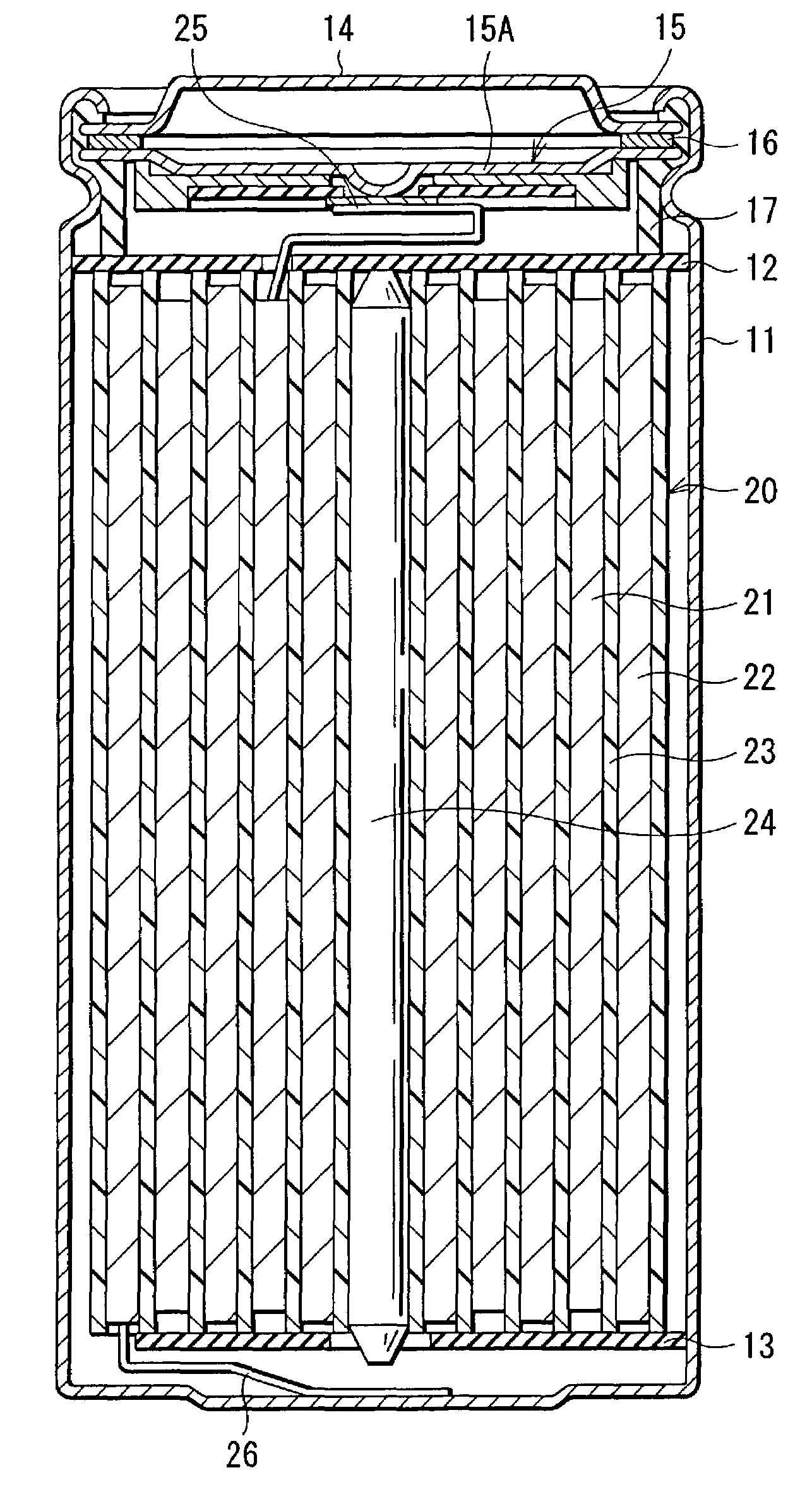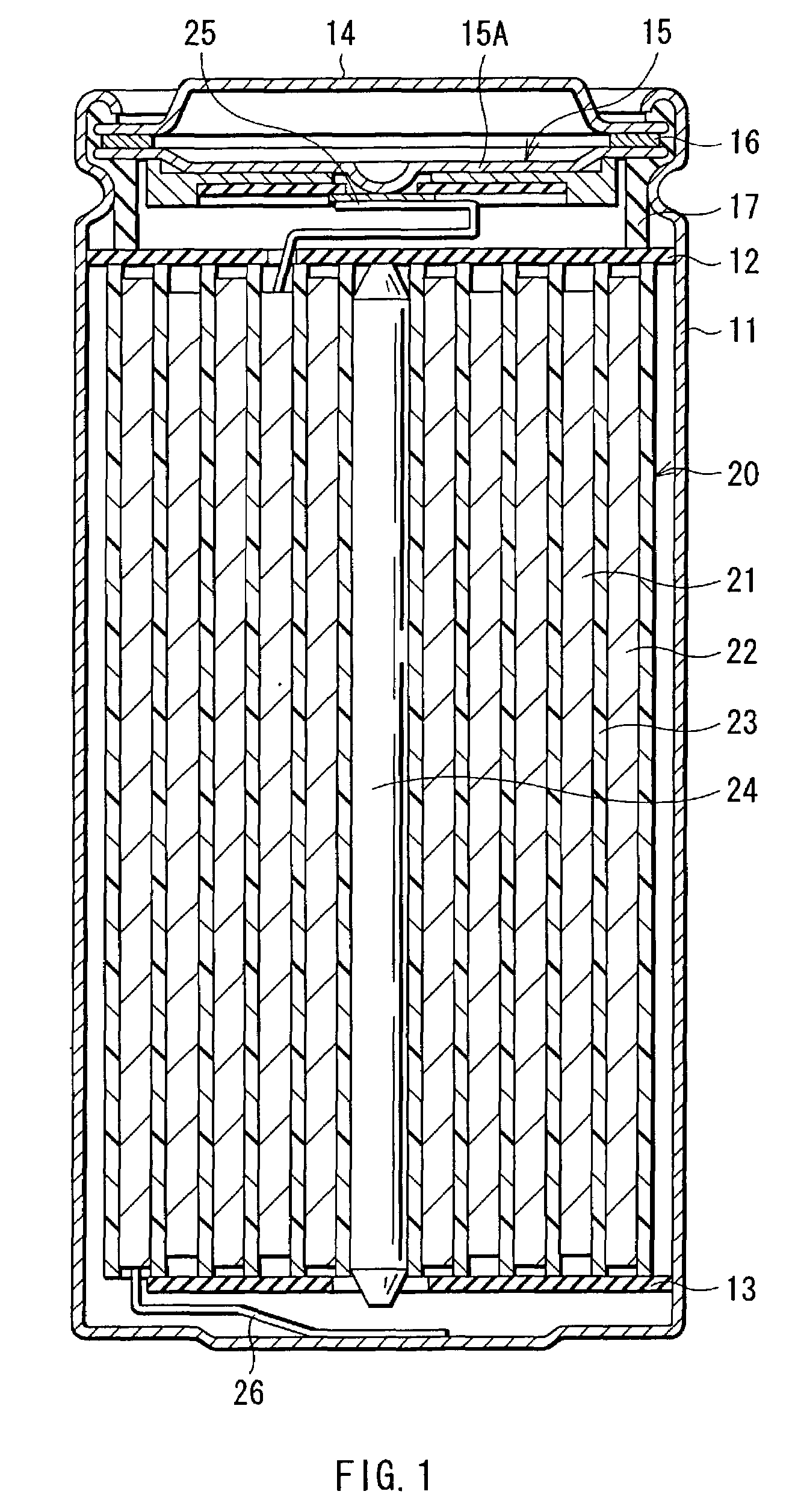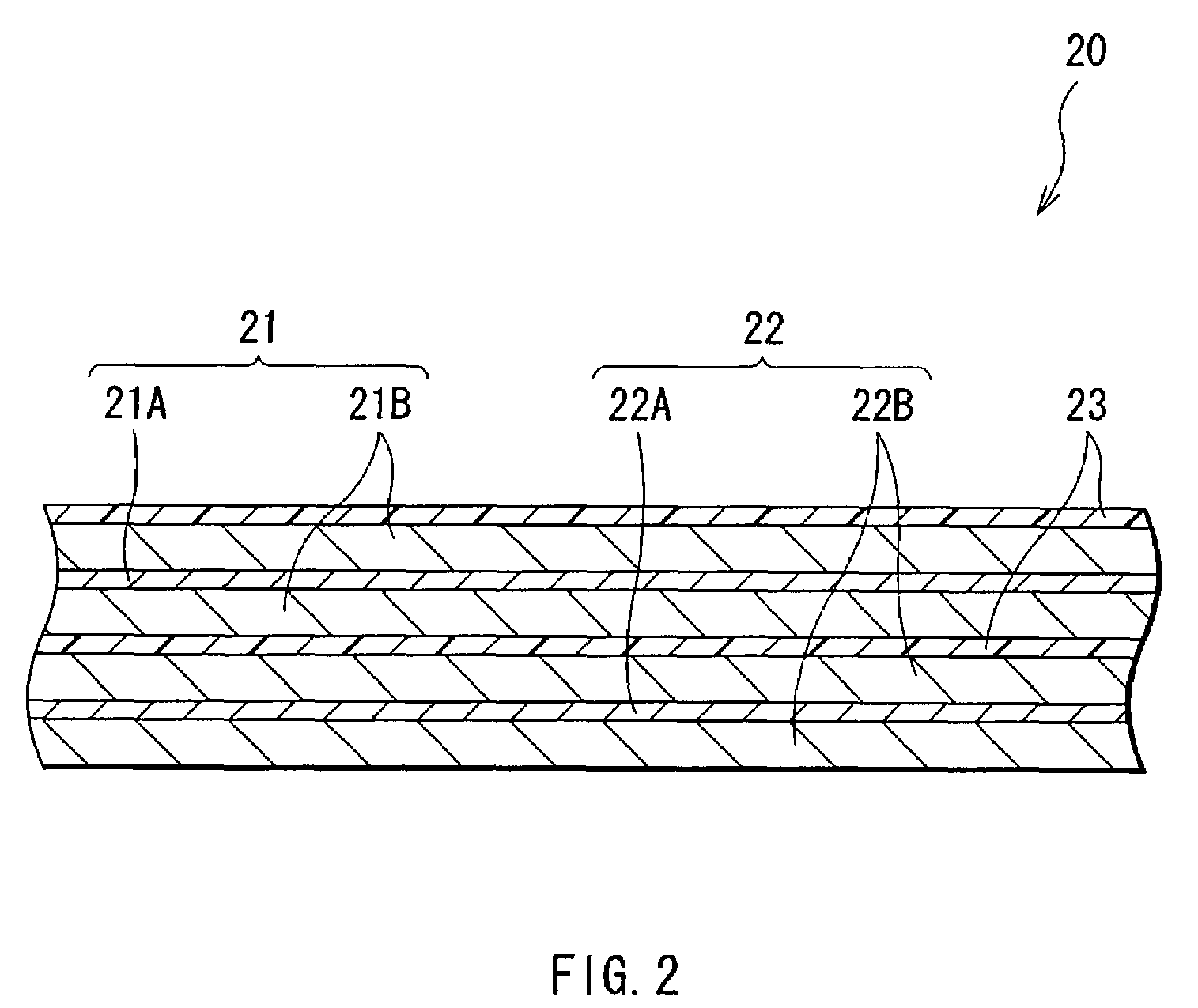Secondary battery and electrolyte used therefor
a secondary battery and electrolyte technology, applied in the field of secondary batteries, can solve the problems of increasing the speed of the central processing unit (cpu) thereof, increasing the power consumption of the central processing unit (cpu), and consuming electric power not only by, so as to achieve the effect of preventing degradation
- Summary
- Abstract
- Description
- Claims
- Application Information
AI Technical Summary
Benefits of technology
Problems solved by technology
Method used
Image
Examples
examples
[0066]Furthermore, concrete examples of the invention will be described in detail.
examples 1-1 to 1-63
[0067]The same cylinder type secondary batteries as the secondary battery shown in FIGS. 1 and 2 were produced as follows. Here, they will be described using the same symbols with reference to FIGS. 1 and 2.
[0068]First, lithium carbonate (Li2CO3) and cobalt carbonate (CoCO3) were mixed at a ratio of Li2CO3: CoCO3=0.5:1.0 (molar ratio), and fired for about 5 hours at about 900° C. in the air to obtain lithium cobalt composite oxide (LiCoO2) as the positive active material. Subsequently, the lithium cobalt composite oxide was ground to obtain powder with 50% cumulative particle size of 15 μm which was obtained by the laser diffractometry. In addition, X-ray diffraction measurement was performed on the above-obtained powder, and this has revealed that the pattern thereof agreed with the X-ray diffraction pattern of LiCoO2 in the JCPDS (Joint Committee of Powder Diffraction Standard) file. Furthermore, 95 weight parts of the lithium cobalt composite oxide powder and 5 weight parts of li...
examples 2-1 to 2-74
[0092]Except for changing composition of the electrolyte salt, the same cylinder type secondary batteries as the secondary battery shown in FIGS. 1 and 2 were produced like Examples 1-1 to 1-63.
[0093]Lithium salts obtained by mixing PF6−, (PFaQbRc)−, and N(CnF2n+1SO2)2− at certain concentration ratios as shown in the following Tables 6 to 9 were used as the electrolyte. Concentration of the whole electrolyte salt is similarly 1 mol / dm3.
[0094]“Capacity recovery rate after storage” and “heavy load discharge maintenance rate” were calculated on the same conditions as Examples 1-1 to 1-63 using the produced secondary batteries. Furthermore, using the above secondary batteries, battery capacities before cycle were measured after discharging the batteries to a final voltage of 2.5 V at a constant current of 1.0 A in a 50° C. atmosphere. Then, cycle of constant current and voltage charging in the 50° C. atmosphere on the conditions of a maximum voltage of 4.2 V, a constant current of 1.0A ...
PUM
| Property | Measurement | Unit |
|---|---|---|
| temperatures | aaaaa | aaaaa |
| thickness | aaaaa | aaaaa |
| density | aaaaa | aaaaa |
Abstract
Description
Claims
Application Information
 Login to View More
Login to View More - R&D
- Intellectual Property
- Life Sciences
- Materials
- Tech Scout
- Unparalleled Data Quality
- Higher Quality Content
- 60% Fewer Hallucinations
Browse by: Latest US Patents, China's latest patents, Technical Efficacy Thesaurus, Application Domain, Technology Topic, Popular Technical Reports.
© 2025 PatSnap. All rights reserved.Legal|Privacy policy|Modern Slavery Act Transparency Statement|Sitemap|About US| Contact US: help@patsnap.com



